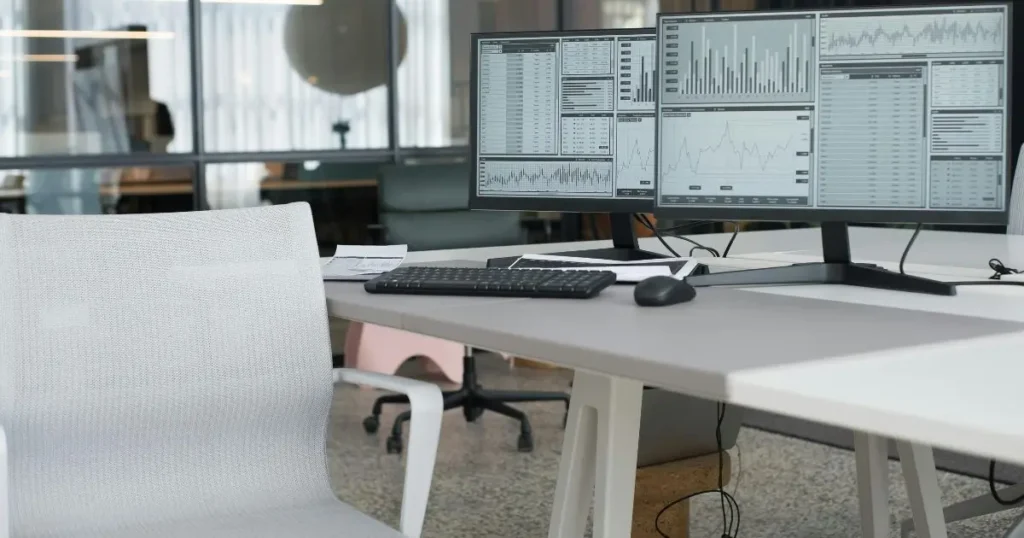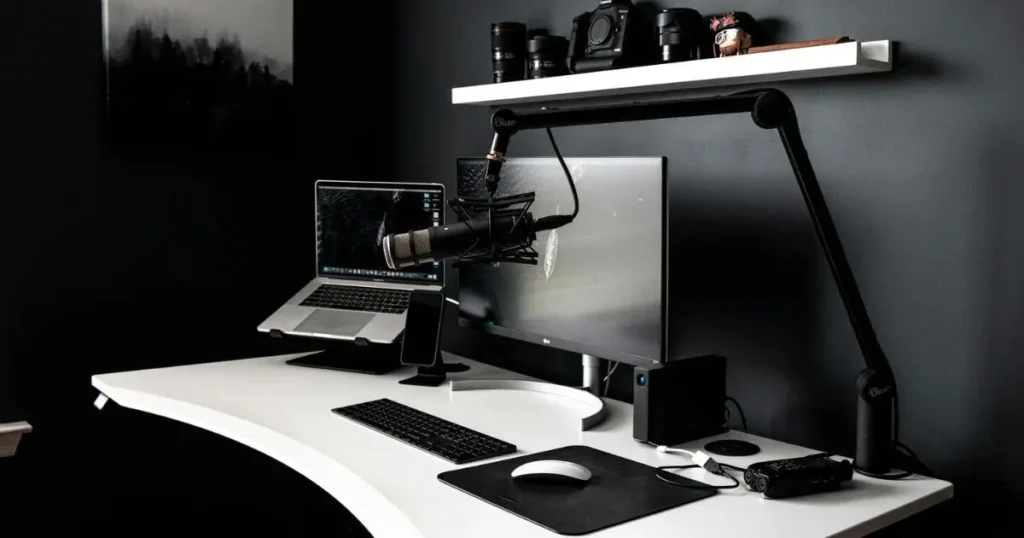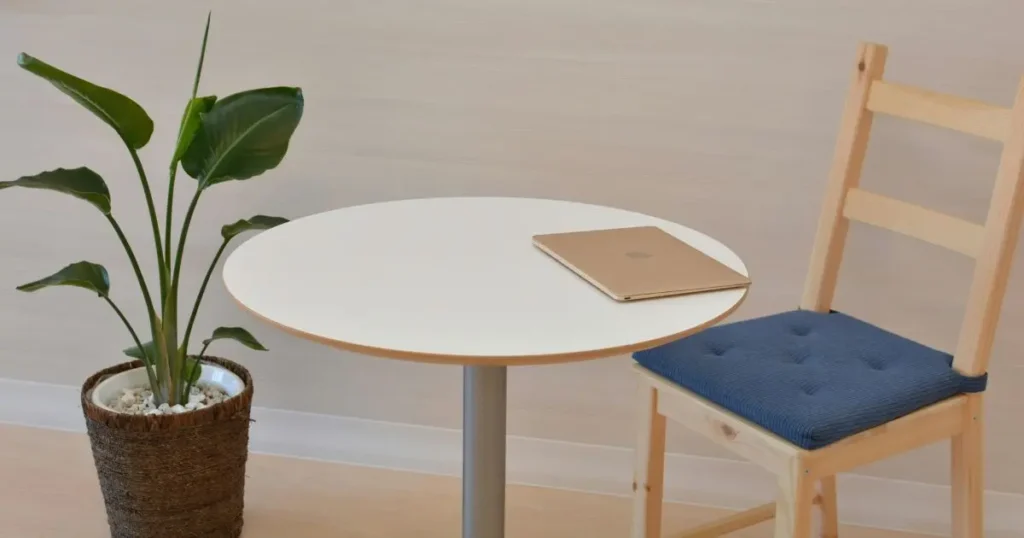Introduction
The Rise of the “Work From Anywhere” Era: Why Ergonomics Matters More Than Ever
In 2025, the “work from anywhere” culture will become the new norm. From home offices to co-working spaces, the demand for ergonomic workspaces has surged as individuals prioritize comfort and health in their work environments.
Ergonomics isn’t just a luxury; it’s a necessity for maintaining productivity and well-being in this modern era.
2025: The Year of Ergonomic Evolution: Embracing the Future of Work
This year marks a significant shift towards more personalized and tech-driven ergonomic solutions. Innovations in furniture, tech integration, and workspace design are transforming how we approach work.
Designing an ergonomic workspace is no longer about just aesthetics; it’s about enhancing physical and mental health while maximizing productivity.
What is an ergonomic workspace?
An ergonomic workspace is more than a stylish setup; it’s a thoughtfully designed environment that reduces physical strain and promotes efficiency.
It includes adjustable furniture, proper lighting, and the tools to support healthy posture and movement. Think of it as a workspace that works with your body, not against it.
Why Ergonomics Matter in 2025
The way we work has drastically changed, especially after 2020. With remote and hybrid work becoming the norm, people spend more hours at their desks than ever.
Poor setups can lead to back pain, neck strain, and other health issues. Investing in an ergonomic workspace boosts your comfort, prevents long-term injuries, and keeps you productive.
Key Features of an Ergonomic Workspace
- Adjustable desks and chairs
- Proper monitor height and screen distance
- Lighting that reduces glare and eye strain
- Tools to encourage movement, like standing desks
Benefits of an Ergonomic Workspace
- Improved Productivity: A comfortable setup lets you focus better.
- Better Posture: It reduces back, neck, and wrist strain.
- Enhanced well-being: Less fatigue and stress mean better mental health.
Ergonomic Essentials: The Foundation of a Healthy Workspace

Chair: Your Throne of Comfort
Choosing the Right Chair for Your Body Type and Work Style
The chair is the centerpiece of an ergonomic workspace. Selecting the right one involves understanding your body type, work habits, and preferences.
- Adjustability: Look for chairs with adjustable seat height, backrest tilt, and armrests to ensure a custom fit.
- Lumbar Support: A chair with built-in lumbar support reduces back strain, promoting spinal health.
- Armrests: Adjustable armrests allow your elbows to rest comfortably at a 90-degree angle.
- Seat Height: Your feet should rest flat on the floor, with knees bent at a 90-degree angle to reduce leg fatigue.
Desk: Your Command Center
Finding the Perfect Desk for Your Needs
The desk is the command center of your workspace. Choose one that complements your work style and offers flexibility.
- Standing Desks: These promote an active work routine, reducing the health risks associated with prolonged sitting.
- Height-Adjustable Desks: Allow for seamless transitions between sitting and standing positions.
- Desk Organization: Maintain a clutter-free desk to improve focus and efficiency. Utilize cable organizers and storage solutions.
Monitor: Your Viewing Window
Optimizing Your Screen for Comfort and Productivity
A well-positioned monitor reduces eye strain and enhances your overall work experience.
- Screen Height: Position the top of your monitor at eye level to minimize neck strain.
- Screen Size: Select a monitor size that fits your workspace while ensuring clear visibility.
- Screen Resolution: Opt for high-resolution screens to reduce eye fatigue and improve clarity.
Beyond the Basics: Taking Ergonomics to the Next Level

Keyboard and Mouse: The Tools of Your Trade
Ergonomic keyboards and mice can significantly reduce the risk of repetitive strain injuries (RSIs).
- Ergonomic Keyboards: Split or curved designs support natural hand positioning.
- Vertical Mice: Reduce wrist strain by keeping your hand in a natural handshake position.
Lighting: Illuminating Your Workspace
Proper lighting is crucial for reducing eye strain and creating a productive environment.
- Natural Light: Position your desk near a window for natural light exposure.
- Task Lighting: Use adjustable lamps to focus light on specific tasks.
- Blue Light Filters: Use screen filters or software to minimize blue light exposure from monitors.
Sound: Creating a Harmonious Workspace
Noise management is essential for maintaining focus and reducing stress.
- Noise-Canceling Headphones: Block out distractions in noisy environments.
- White Noise Machines: Create a consistent background sound for better concentration.
Environment: The Power of Your Surroundings
Create a workspace that promotes well-being through thoughtful environmental choices.
- Greenery: Add plants to improve air quality and reduce stress.
- Color Psychology: Use calming colors like blue or green to enhance focus.
The Role of Technology in 2025 Workspaces

1. AI-Powered Ergonomics
In 2025, technology has taken ergonomic design to a whole new level. Smart desks now adjust automatically based on your posture and activity. Wearable devices track your sitting habits and remind you to take breaks.
2. Virtual Reality (VR) for Workspace Design
Imagine designing your workspace in a virtual environment before setting it up physically. VR allows you to test layouts, furniture, and lighting in a realistic simulation.
3. Smart Desk Gadgets
From posture-correcting cushions to apps that monitor screen time, there’s no shortage of tech tools to enhance your workspace.
Ergonomics on a Budget: Making the Most of Your Investment

DIY Hacks: Crafting Your Ergonomic Solutions
If professional ergonomic equipment is out of budget, consider these DIY alternatives:
- Use books to elevate your monitor to eye level.
- Create wrist supports using rolled towels.
- Repurpose household items for desk organizers.
Sustainable Solutions: Choosing Environmentally Friendly Options
Opt for sustainable and eco-friendly products to reduce your carbon footprint.
- Choose furniture made from recycled materials.
- Support brands that prioritize sustainability.
Tech Tools: Using Technology to Enhance Ergonomics
Incorporate tech tools to optimize your workspace.
- Use apps that remind you to take breaks.
- Invest in smart devices that adjust lighting and temperature based on your needs.
Setting Up the Ultimate Ergonomic Workspace

Step-by-Step Guide
- Assess Your Needs: Start by evaluating how you spend your workday.
- Choose ergonomic furniture: invest in an adjustable desk and chair.
- Set Up Your Monitor: Position it at eye level to prevent neck strain.
- Optimize Lighting: Use natural light or a high-quality desk lamp.
- Add Movement: Incorporate tools like a balance board or under-desk bike.
- Personalize: Add plants, photos, or colors to make your space inviting.
Common Mistakes to Avoid!
1. Ignoring Proper Posture
Even the best furniture won’t help if you don’t sit or stand correctly. Take the time to adjust everything to fit your body.
2. Overlooking Breaks
No setup can replace the benefits of regular breaks. Use the 20-20-20 rule: every 20 minutes, look at something 20 feet away for 20 seconds.
3. Skimping on Quality
Cheap ergonomic tools often lack durability or functionality. View your workspace as an investment.
Conclusion: The Future of Ergonomic Workspaces
Embrace the “Work From Anywhere” Lifestyle
Designing an ergonomic workspace for any location ensures comfort and productivity, whether you’re working from home, in a café, or an office.
Stay Ahead of the Curve
Adopt emerging technologies like AI-powered ergonomic solutions to stay on the cutting edge of workspace design.
The Ultimate Ergonomic Goal
A well-designed workspace is more than a workplace; it invests in your health and productivity.
By embracing ergonomics, you can create an environment that supports your well-being and empowers you to thrive in the “work from anywhere” era.


